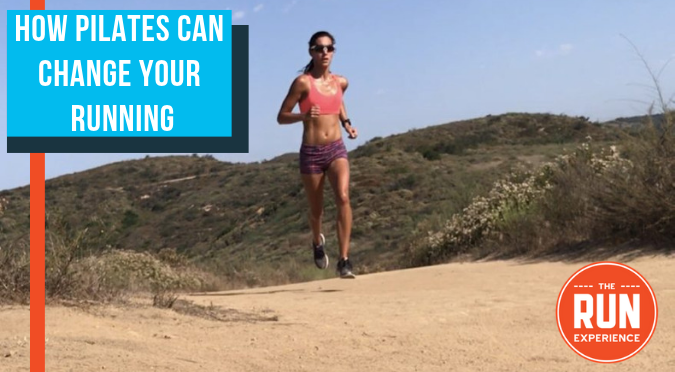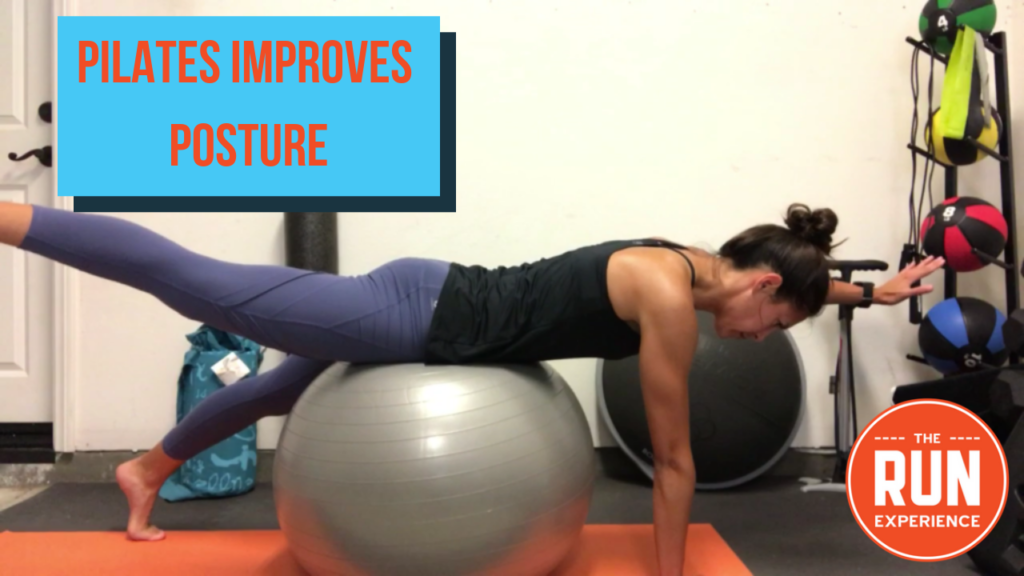Pilates and Running: How Pilates Boosts Your Running
Pilates and running share a lot in common, and combining the two can be an amazing workout for your endurance, flexibility, and form.

Pilates and running share a lot in common, and combining the two can be an amazing workout for your endurance, flexibility, and form. Running and pilates have a lot in common, and many athletes will find the poses and practices directly translate into better running form.
Not sure if pilates is right for your running game? We recommend giving pilates for running a try—it can be a game-changer for your mobility, strengthening, and recovery.
Pilates and running share a complementary relationship that can lead to significant improvements in your running performance. While running builds endurance and cardiovascular strength, pilates focuses on core stability, posture, and controlled movement. This blend of dynamic and mindful exercise can unlock new levels of efficiency and power in your runs.
Whether you're a seasoned marathoner or a casual jogger, understanding the interplay between pilates and running will provide you with new insights and strategies to optimize your training and performance.
Don’t just take our word for it. See for yourself.
Learn how (and why) to add pilates and running to your already-busy training schedule.
Pilates and Running: Why You Need It

So many of us lace up, step out the door, and hit the road. We focus on mileage, our pace, or the scenery around us. Our pace quickens, our arms might flail around, and strides might get too long–and our hamstrings and glutes eventually tighten up.
Most of the time we are only vaguely aware of our body moving through space because our main goal is to hit the mile markers or the pace on our watches.
In Pilates, the sole focus is on slow, deliberate, and appropriate movement. Whether circling the legs separate from the pelvis or contracting the inner core to help stabilize a position, each movement is thoughtful.
Pilates for runners teaches you how not to cheat, using sheer strength and will. It helps to identify those inner weaknesses in the stabilizing muscles.
Fusing Pilates as cross-training with running helps us take what we learned in Pilates back to the road! We’ll be able to identify improper movements while running and make minor adjustments to correct our form.
Is Pilates Good for Runners? Really?
As runners, we often focus solely on mileage, speed, and endurance. But is there more to enhance your running performance? Absolutely, and it comes in the form of Pilates. The question isn't just 'Is Pilates good for runners?' but rather 'How can runners not afford to include Pilates in their regimen?'
Benefits of Pilates for Runners
Pilates is renowned for its emphasis on core strength. A strong core is crucial for runners, as it stabilizes the pelvis during running, supports the lower back, and enhances overall running efficiency. Pilates exercises target not just the superficial abs but the deeper core muscles, creating a solid foundation that benefits every stride.
Runners often struggle with tight muscles and limited joint mobility, leading to inefficient running form and potential injuries. Pilates incorporates stretching and flexibility work that can help lengthen tight muscles and improve joint range of motion, making it a valuable practice for increasing overall body mobility.
Pilates places a strong emphasis on proper breathing techniques, teaching runners how to use their breath more efficiently. This can be particularly beneficial during running, where controlled breathing is key to maintaining stamina and endurance.
The balanced approach of Pilates, targeting various muscle groups, helps in addressing muscular imbalances that are common in runners. This not only enhances performance but also plays a significant role in injury prevention, keeping common runner's ailments at bay.
Integrating Pilates into your running training not only enhances your physical capabilities but also brings a holistic improvement to your overall running experience. Pilates for runners isn't just a trend—it's a practical approach to building a stronger, more resilient, and efficient runner's body.
How to Use Pilates for Running
Running and pilates mutually benefit each other. Do more pilates, and your running will improve. Practice better running, and your pilates will improve.
Here’s how the two work hand in hand to benefit your athletic game.
1. Improve Your Posture

Often, as our running body fatigues, our running form suffers. Many times we collapse in on ourselves, with the upper body slumping—hoping that our legs will just carry us to the finish line.
What we fail to recognize is that our body is a complete system. Once one part is compromised, the rest follows suit. If we lose our posture, our legs can’t function to their full potential because of added strains.
The benefits of Pilates include emphasizing proper posture during every movement. It trains the proper alignment of head, neck, spine, and pelvis throughout each exercise. It also builds strong core strength.
Strengthening those muscles through slow and deliberate Pilates moves allow us to hold the same correct alignment through any run, no matter the distance.
2. Nurture Easier Breathing

One of the fundamentals of Pilates is the breath.
Any Pilates instructor will tell you that the breath is the central component of every movement. We often think of breathing as something that happens to us, not something we actively participate in. Yet, with thoughtful and controlled breathing, we can ensure that enough oxygen is getting to the appropriate muscles.
There are many schools of thought as to which is the correct breathing exercise for running. Without weighing in on any one of those specifically, Pilates will bring awareness to your breathing on a deeper level.
A Pilates class will teach you proper deep, diaphragmatic breathing that can oxygenate every muscle and relieve tension while running. Between the improved body awareness, posture and breathing, consider Pilates a way to subtly, yet effectively, compliment and elevate your running!
Creating a Pilates and Running Schedule
Creating a harmonious Pilates and running schedule is key to reaping the benefits of both without overtraining. The goal is to balance these workouts in a way that enhances your running performance while giving your body the strength and flexibility it needs.
Here’s a guide to help you craft an effective Pilates and running schedule:
- Frequency: The ideal frequency will vary based on individual fitness levels and goals. As a general rule, incorporating Pilates 2-3 times a week alongside your running routine can offer significant benefits without leading to burnout.
- Intensity Variation: Alternate between high-intensity running days and Pilates sessions. This variation prevents overuse injuries and ensures a well-rounded approach to fitness.
- Adjust for Race Training: If you’re training for a race, adjust the schedule to prioritize running, using Pilates for active recovery and injury prevention.
- Listen to Your Body: Pay attention to how your body responds. If you feel fatigued, don’t hesitate to take an extra rest day or replace a running session with a gentle Pilates workout.
- Incorporate Rest: Ensure you have at least one full rest day or active recovery day per week to allow your body to recuperate.
- Post-Run Pilates: Consider a short Pilates session after a run to stretch out tight muscles and enhance flexibility.
- Pre-Run Activation: On running days, a brief Pilates routine in the morning can activate your core and align your body for the run ahead.
Sample Weekly Schedule
Monday:
- Light Run (Focus on distance at a comfortable pace)
- Short Pilates session focusing on core and flexibility in the evening
Tuesday:
- Rest or Active Recovery Day (Gentle stretching or a leisurely walk)
Wednesday:
- Interval Running (Higher intensity, shorter distance)
- Pilates session focusing on strength and stability
Thursday:
- Rest Day or Light Cross-Training (Cycling, swimming, etc.)
Friday:
- Tempo Run (Moderate intensity and distance)
- Pilates session emphasizing breathing and alignment
Saturday:
- Long Run Day (Focus on building endurance at a steady pace)
Sunday:
- Complete Rest Day or Gentle Pilates focusing on recovery and relaxation
Combining Pilates and running in your weekly schedule can lead to significant improvements in your running form, efficiency, and overall fitness. By strategically planning your workouts, you can enjoy the benefits of both disciplines without risking overexertion.
Remember, the key to a successful Pilates and running schedule is flexibility and adaptation to your body's needs and responses.
Add Running and Pilates to Your Routine
Want to learn more about how pilates for runners can complement your running, relieve back pain, and build deep core muscles? Or maybe just follow along with Meghan and her running adventures? Check this out.
And if you’re out of ideas for strength workouts, try this!
